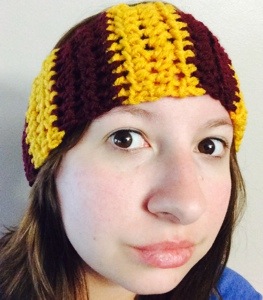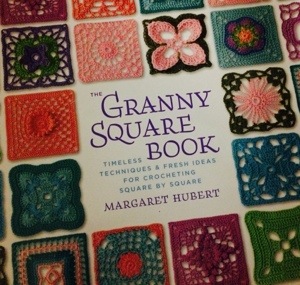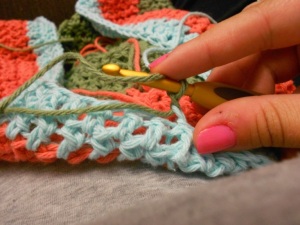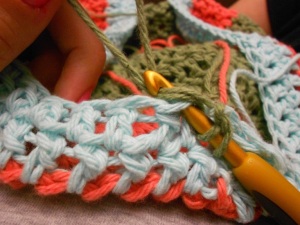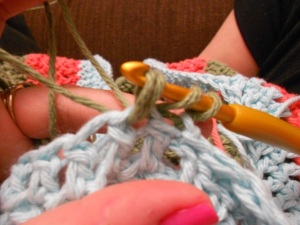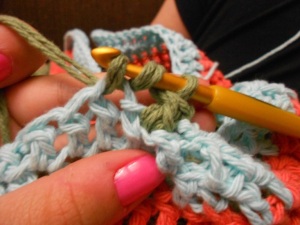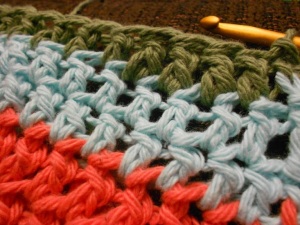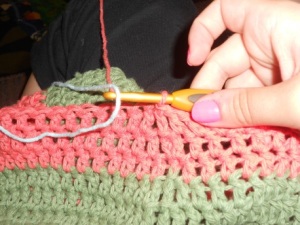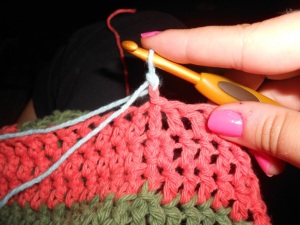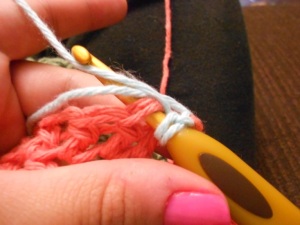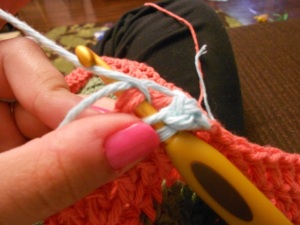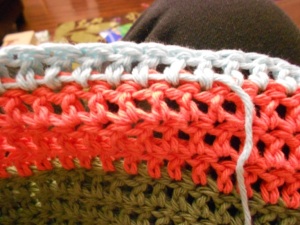Covering the ears is one if my main goals when making any kind if head wear. I think it stems from being a kid; I always had to have my ears covered, even in the bath tub because of my frequent ear infections. I do it to my son too, “Cover those ears!”
I recently made a batch of requested head wear for a few folks and one of them is a headband. I know I’ve talked about headbands already, but this one is my own pattern so I thought I would share with you how to make your own. It is a great ear warmer!!
The materials that you will need are:
H hook
Worsted weight yarn, two colors if you want strips like mine
Scissors
Yarn or tapestry needle
Here’s the pattern:
Ch 10
Row 1: HDC In third ch from hook and HDC in each ch across, ch1 and turn (8HDC)
Row 2: HDC across, ch1 turn.
Continue until you reach the desired size to snuggly fit around your head. When the desired length is reached do not tie off! Simply ch1 and turn the work as if you are going to start another row, but instead hold the two ends together and slip stitch across. Then tie off the end and weave in ends. If you want stripes like mine, I switched color every third row. To ensure a smooth color change make sure you finish the last stitch of the row before you intend to switch by pulling up the new color when you have two loops on your hook.
Happy crocheting!
